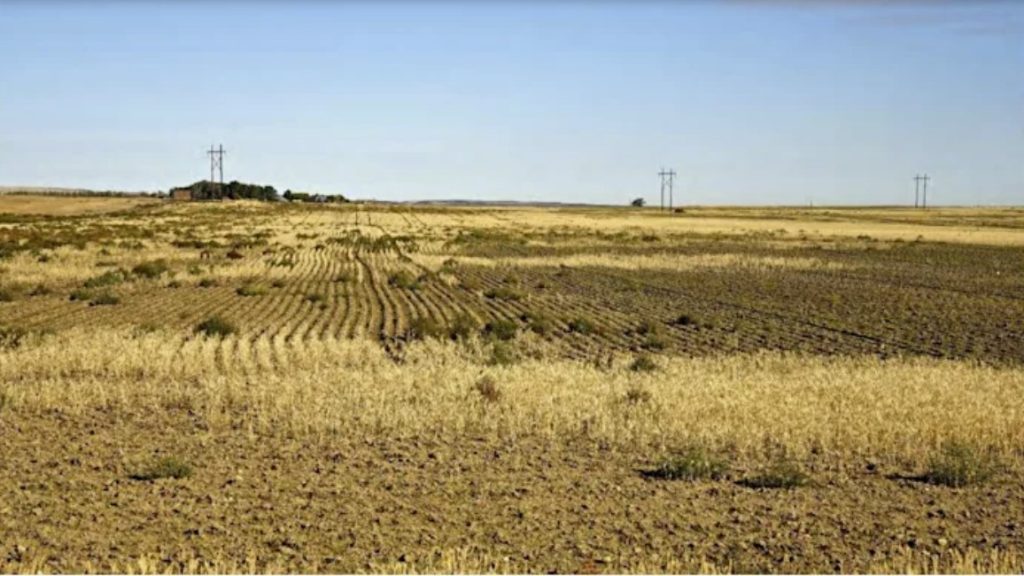
There’s an old weather adage that’s been passed over cups of coffee and glasses of beer for nearly a century: “It’s not a drought ’til it breaks your heart.”
Today, the hearts of thousands of Montanans have broken across the bare back of one of one of the worst droughts in Montana history: farmers trying to balance their books after a paltry harvest, stockmen paying too much to feed already skinny cattle, outfitters and fishermen prevented from landing a fish because the streams were either too warm or too dry, conservationists and recreationists of all types who watched Montana’s forests burn and its prairies shrivel.
On Dec. 15, 2021, every county in Montana was identified as experiencing some level of drought, with a third of the state is in the grips of a “D4” or “exceptional” drought, a designation the U.S. Department of Agriculture expects to occur in any one location just once every 50 to 100 years. The entire state is, on average, 4.66 inches behind in annual precipitation. The only years that have been drier were 1931, 1919 and 1952.
There have been longer droughts, both in the first half of the 1930s and again in the early 2000s, and isolated portions of Montana have withered under more extreme stretches of heat and dryness for limited periods of time, but according to the National Centers for Environmental Information (NCEI) in only three of the past 127 years have Montanans as a whole endured such bone dry conditions.
“Since 2000, the longest duration of drought (D1–D4) in Montana lasted 307 weeks beginning on May 16, 2000, and ending on March 28, 2006,” the National Integrated Drought Information System (NIDIS) states. “The most intense period of drought occurred the week of November 23, 2021, where D4 affected 33.10% of Montana land.”
“It’s been quite a year,” said Michael Downey, supervisor of the Montana Department of Natural Resources and Conservation’s (DNRC) Water Planning Section. “I’ve been in Montana for 27 years, and I’ve never seen anything like this.”
A drought like few others
Within living memory, a few years stand out for their damaging drought conditions. Among them are 1988, 2012 and 2017. Downey notes that those harsh years were characterized by intensely hot, dry summers, but late-season rains shortened those drought’s impacts — albeit too late for that year’s growing season.
“A large-scale drought event occurred in 2012, which was unique in that it followed a devastating flood across the Missouri River Basin in 2011,” the NIDIS explains. “The upper Missouri River Basin was hit again in 2017 with a flash drought that was characterized by a rapid decline in soil moisture, low spring rainfall, high temperatures and above-average wind speeds. Agricultural losses alone totaled in excess of $2.6 billion dollars.”
2021 has been different, and has the potential to be more damaging.
“In 1988, we saw really good moisture come in September and October, which is really similar to 2017 when we had a really dry, hot summer,” Downey explained. “2017 was kind of a one and done, and by 2018, we were out of the drought. We have not had that wet fall this year. In fact, we had an extremely dry fall.”
“Although short-term rain events may begin to replenish near-surface soil moisture, it can take months or multiple seasons to percolate into deeper subsoils, into groundwater aquifers, and to recharge reservoirs,” a National Oceanic and Atmospheric Administration (NOAA) advisory states. “It will be important to see how winter precipitation develops, in addition to the timing of melt and quantity of spring precipitation, to fully understand what conditions might be moving into next year’s growing season.”
Downey put it more succinctly.
Much of the current drought’s impacts are attributed to the often referenced “La Niña” weather pattern. La Niña develops when sea surface temperatures in the eastern equatorial Pacific Ocean are consistently cooler than average for an extended period of time. These cool waters affect the location of the jet streams, which impacts weather in North America. According to NOAA, some of the most notable impacts of La Niña typically occur in winter.”For the Missouri River Basin states, the typical winter La Niña pattern leads to increased chances for below-normal temperatures across the upper Basin,” a NOAA report from November 2021 explains. “The northern Rockies may also have increased chances for above-normal snowpack.”
“For Montana, it’s not super unusual to be in some drought conditions even during the winter,” he noted. “The trouble is that it’s only worsened since then. We’re not coming out of this drought for a while, regardless of the weather we have.”
Unfortunately, that’s not always the case. In early August of this year Arin Peters, a hydrologist with the National Weather Service, noted that 2020 was also a La Niña year, but the abundant precipitation expected that winter never materialized.
“That didn’t really pan out as far as precipitation sometimes does with La Niña,” Peters said.
Thus far, the La Niña pattern of 2021 has returned the same disappointing outcomes. According to NOAA, snowpack depths across much of Montana are currently less than 60% of their normal values for this time of year.
“When we look at the snowpack in general, not too deep,” said climatologist Justin Glisan, a representative of the Northern Plains Climate Hub. “We are seeing a below-average snow water equivalent within that basin-wide percentage. Of course, this is early within the snowfall season so we do have time to go, but these are relatively low compared to where we are at this time of year.”
While 2021 may end up being one of the driest years on record, it didn’t start out that way.
“The year actually started out above normal for precipitation,” explained Jim Brusda, chief meteorologist for the National Weather Service in Great Falls. “We started out the year a little bit below normal, then this past May, Great Falls had 4.38 inches of rain. It was actually 1.87 inches above normal and we made up our deficit. Then the faucet turned off, and that’s where the problems began.”
Brusda pointed to a 10-week period between the end of May and mid-August when most of Montana received almost no precipitation whatsoever.
“It was also very warm,” he added. “It was comparable to 2007, which was a very warm year. We had a few wet days in August and a few wet days in September, but since then, we haven’t had any significant amounts of precipitation. So it hasn’t been a whole year of dryness, it’s just been the past six months that have been really dry.”
According to Downey, the second half of 2020 was a lead-in to the harsh drought conditions of 2021
“If you look back to when this drought started, it really goes back to June of 2020,” Downey said. “Down in southwest Montana, we had moderate drought conditions and about 30% of the rest of the state was abnormally dry. In January 2021 across a lot of the state, we were abnormally dry and did have severe drought conditions in parts of the state.”
Abnormally high winds have also contributed to the current severe drought conditions.
“Part of the reason why the dryness was so bad in November and December was the wind,” Brusda said. “We’ve had numerous windy days and the wind was very strong. We had a couple inches of snowfall in November, but it just melted off and dried up. So the grass went dormant with the couple of cold days that we had. You combine that with the very strong winds and the low humidities – it just remains dry.”
Timing is everything
The severity of any drought is not just a function of how much or how little precipitation an area gets. The timing of the rains, snowpack accumulation, and how quickly the snowpack melts off all interact to mitigate or worsen a drought’s overall impacts.
Solid rains in September do little to improve fall crop yields. A big snowpack in February doesn’t add a whole lot to irrigation and summer time stream flows if it all melts off by May. “Effective precipitation” is the key phrase, and timing is everything.
According to Dr. Lance Vermeire, range ecologist at Fort Keogh, forage production across the state is predominately determined by precipitation received during the months of April and May, and the growing conditions experienced during the months of May and June. In an interview with the Prairie Star, Vermeire noted that in 2021 precipitation was low and temperatures were warmer than normal during this crucial time.
“It’s important to keep in mind that by the first of July, 90% of forage production in Montana is already complete,” Vermeire told the Prairie Star. “Timely rain in June, July, and August can help keep range grass green, but they don’t do much for actual growth. The same theory applies to fall rains. While late-season moisture will soften the grass and replenish water reserves, on average it does little to initiate forage growth.”
Heat and high winds have made things worse. Not only has 2021 been the fourth driest year in recorded history, it has also been the sixth warmest since 1895, averaging 3.2 degrees Fahrenheit warmer than the mean year-round daily temperature of 46 degrees.
And that points to the real driver of exceptional drought conditions in Montana over the past century. NIDIS data from the past 127 years shows that annual precipitation levels across the state have remained remarkably stable. There have been both dry and wet years, even extended periods of drought or flood, but overall, Montana has maintained a fairly consistent statewide average of 18.65 inches of precipitation annually.
The average temperature in Montana on the other hand has been trending progressively warmer since the 1970s. Six of the eight warmest years on record have occurred over the past 15 years. One of the most dramatic impacts of rising temperatures has been a dramatic increase in wildland fire activity across the western United States.
A June 2021 report published by the National Academy of Sciences notes “the average warm season burned area in the western United States during 2001 to 2018 was about 3.35 million acres, nearly double (+98%) that of the previous period of 1984 to 2000 (1.69 million acres).” According to a National Interagency Fire Center (NIFC) report, “the area burned by wildfire during the 2020 warm season reached 8.8 million acres, more than five times the average during 1984 to 2000.”
Recent devastating wildfires across Montana this winter provide additional evidence that drought and warmer temperatures are on the verge of creating a year-round wildfire season in the state.
“We’ve seen significant wildlife potential for December,” said Justin Glisan of the Northern Plains Climate Hub. “Most of … Montana has large precipitation deficits going back several months. We have soil moisture that’s telling us something, we have snowpack that’s telling us something and they’re converging on these drought conditions.”
A plan for the future
All this may seem overwhelmingly pessimistic, but there are things that can and are being done to better prepare Montana for a warmer if not drier future.
“If you look at the projections in looking at climate change, we’ve got a drier future ahead of us,” Downey said. “There is data showing some places in Montana actually getting more precipitation, but part of the problem is when we get it. At the end of the year we could have had average rainfall, but still experience serious drought because of when it came.”
Montana has recently begun an in-depth revision of its statewide Drought Management Plan, with the goal of providing communities and individuals with information and resources to effectively respond to and mitigate the impacts of drought. Understanding past drought conditions and improving monitoring are going to be key elements of the state’s updated drought management plan. The update was announced in October and is scheduled to be completed in early 2023.
“This is way overdue,” said Downey, who is one of four DRNC planners for the new Drought Management Plan. “Our last official Drought Management Plan was done in 1995, and the metrics that we use to measure drought have changed. I think that getting this new drought management plan is going to get people more resources, and will generate new policy and program recommendations that, hopefully, the state legislature can take up. Hopefully, we can really make some progress on this front.”
Downey said many Montana ag producers are already incorporating an improved understanding of soil health into their own drought management plans to help maintain productivity on drought-stressed fields. Increased utilization of marginally productive upland acreages and off-stream water development projects are also playing a role.
Montana’s cities and towns also have a role to play.
“If you look at where most domestic water at the community level is used … often up to 60% to 70% of that water (during the hot summer months) is used for lawns and trees and things like that,” Downey noted. “I think we can do a lot better in terms of that water use. That really adds up. Grass is really resilient and it will go dormant, so instead of keeping your grass green, keep your shrubs and trees alive.”
“Communities also need to look at where they get their water at, and to develop alternative sources of water. For municipalities that rely on a watershed, what happens in the case of a large fire in that watershed? Have you developed your alternative supplies so you can make that switch?”
No matter how detailed the planning, there is only so much that can be done to offset the impacts of extended and severe drought. Downey acknowledges that there may come a point when some ag producers may have to face the cruel reality of being “droughted out.” Even under these extreme circumstances the state has options to help victims of drought to move forward.
“Part of our problem is that here in Montana, unlike some other states, is that we haven’t created emergency funds to help people dealing with drought,” he observed. “Is it time to have that conversation? How do we put together a network that gets people through this? Then the question becomes, well where do we get the money? I certainly don’t have an answer, but I do think that engaging in this planning process is going to bring up some of those questions and hopefully provide some answers and generate some ideas.”
“There once again, we tend not to think about these things until we’re in the middle of a drought, and then it’s too late,” Downey added.
The DNRC is actively seeking public comment and input in the formation of Montana’s new Drought Management Plan. To learn how you can get involved in this multi-agency, stakeholder-driven effort to make Montana more drought resilient, log on to the Montana Drought Plan Information Hub at dnrc.mt.gov/divisions/water/drought-management.
This article originally appeared on Great Falls Tribune: Montana farmers, ranchers and towns struggle under extreme drought
Now subscribe to this blog to get more amazing news curated just for you right in your inbox on a daily basis (here an example of our new newsletter).
You can also follow us on Facebook and/ or Twitter. And, by the way you can also make a donation through Paypal. Thank you!
You should really subscribe to QFiles. You will get very interesting information about strange events around the world.



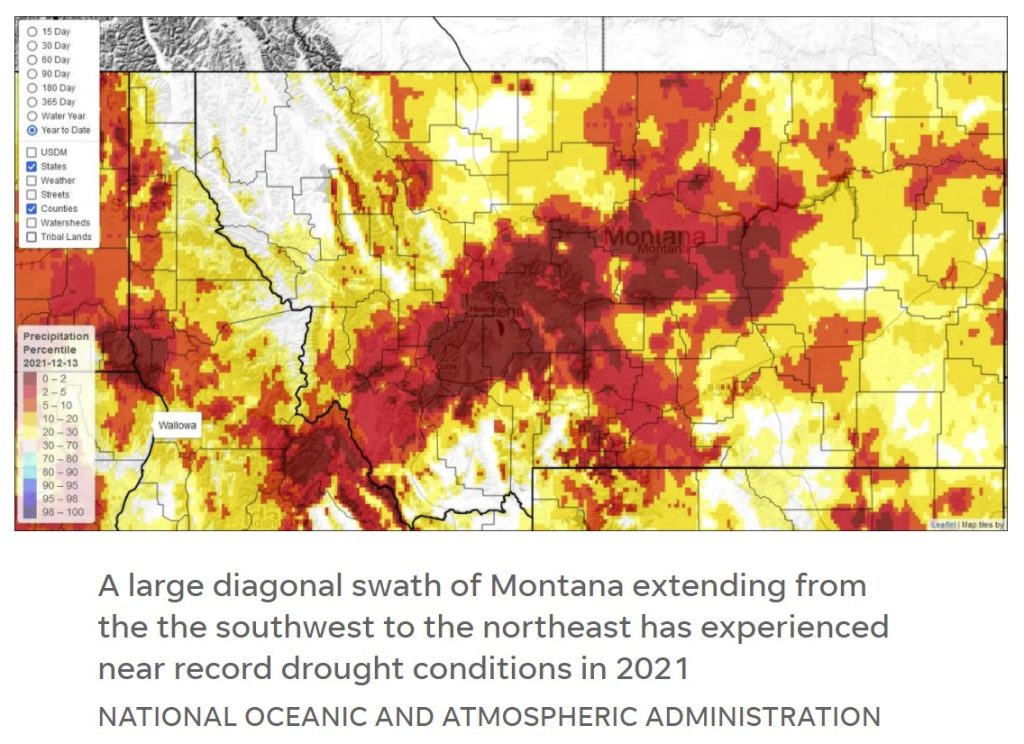
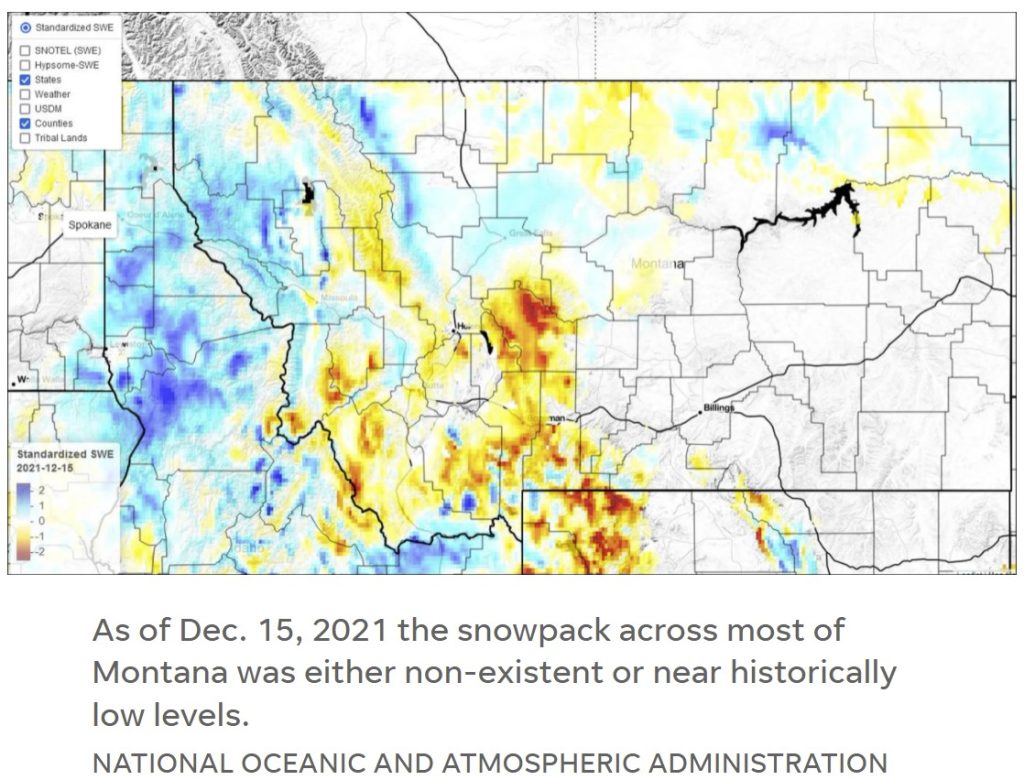








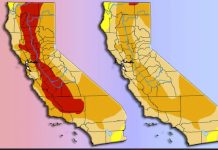
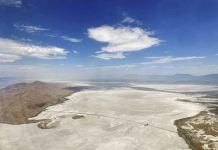

There were much dryer years in Montana in the 70s and 80s. Think Yellowstone fire.
How is it that I hear about WATER SHORTAGES everywhere and rarely see a report on the FACT that there is more water in underground Aquifers than this entire Planet could ever use??!! Yes, it’s Deep Potable Clear Pure drinking water. It requires drilling at 5,000’ or deeper sometimes BUT we have done it for decades drilling for Oil worldwide! So for complete understanding and info on this Amazing Source of water…visit: StoptheCrime.net and search for “Deep Water” report…you’ll be glad you did. Don’t buy the Government’s nonsense…
Blessings.